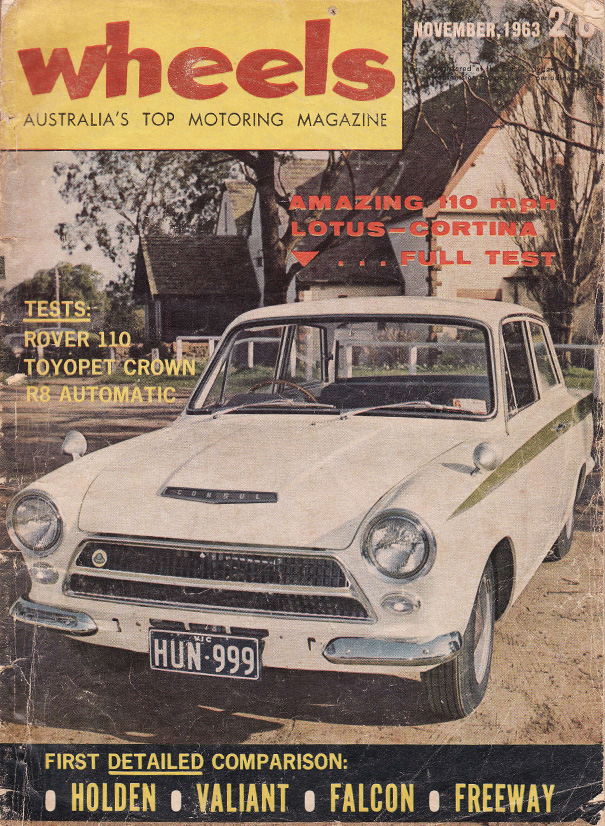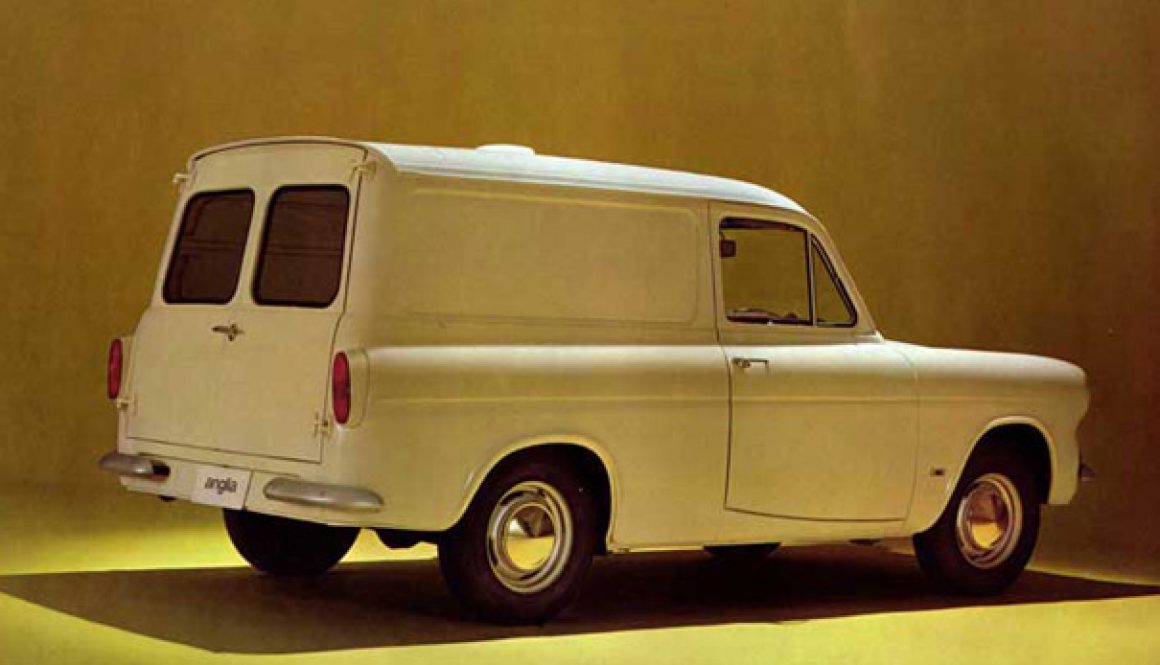Lotus Cortina Mk1: A history Part 2
The process to make other Lotus-Cortinas more mainstream and reliable was underway.
This appealing van version of the Ford Anglia (above) was never sold here probably because its imported cost would have been too close to the local Falcon panel van. However, it was good enough for the Lotus-Cortina to wear its rear bumpers at the front. Those hubcaps look familiar too! (Image: kitfoster.com)
The Second Lotus-Cortina Mk I
In October 1964, a Lotus-Cortina was revealed with the wide grille facelift, new instrument panel with round instruments and the latest Aeroflow face-level ventilation with its exit vents on the C-pillars.
After the bonnet Consul badge was switched to Cortina, it was arguably the first Lotus-Cortina as technically the earlier cars were Lotus-Consul Cortinas! Ford had previously launched and promoted the Cortina as part of the Consul family to highlight its family car focus. Thanks largely to the Lotus connection, the Cortina now had its own identity.
Cortina GT seats replaced the bespoke Lotus items. Because the new instrument panel was designed to be easily upgraded with extra gauges for the Cortina GT, the Lotus instruments no longer required a special dash. However, the instruments did feature a special satin silver surround and the dash was painted black. To match this, the steering wheel centre badge was changed from yellow and green to black and silver.
The centre console and centre armrest/bin plus the umbrella handbrake continued, all missing from the GT cabin. Front quarter vents and rear side glass were now fixed thanks to the Aeroflow system unless optioned otherwise. Under the bonnet, little had changed except the brake booster was moved to the front of the engine bay for left hand drive.
Later in 1965, a centre badge celebrating Lotus achievements at Indianapolis was added to the centre console.
From July 1965, the Cortina GT rear axle was fitted after Ford added radius rods to its leaf spring rear end. As soon as race teams found the change made no difference to lap times, the rear bracing could be deleted which freed up the boot after the spare was returned to its LHS rear corner well.
Late in 1965, the new gearbox from the Corsair V4 was fitted and regarded as the best for road use. Its indirect ratios were closer to the original Elan gearbox but with a better spread.
Freed from fluttering and easily damaged aluminium panels, an excessively tall first gear that chewed up clutches in traffic, a body shell that highlighted resonances and a rear suspension design that kept eating its way through diffs and threatened the rear body structure over anything other than smooth roads, the Lotus-Cortina was ready to be enjoyed as a road car.
At this point, the Lotus-Cortina was exported to the US timed perfectly to cash in on recent Lotus Indianapolis victories.

Australian exposure to the Lotus-Cortina road car was very limited and long after it was first seen in the UK. After Harry Firth couldn’t join Norm Beechey and Peter Manton as the Neptune Cortina driver because of Ford development commitments, the Wheels cover car was quickly pressed into service as the Neptune team’s Cortina. It was then developed into the fastest Lotus-Cortina in the world in the hands of Jim McKeown.
After the Lotus-Cortina Mk I (and the Elan by association) had achieved its brief of adding glitter to the Cortina badge, it was time for all parties to move on. Lotus had grown to such an extent that it now had to relocate its production facilities at Hethel to meet demand for its own ever-expanding road car range.
The durability and quality gap that existed between Ford’s own Cortina GT and the Lotus-Cortina and the warranty claims that came with this were no longer acceptable. The model was dropped from late 1966 until March 1967.
The next Lotus-Cortina, based on the Mark II, was a very different car built by Ford. Yet its soul was still by Lotus after engine manufacture was switched from JAP to the new Lotus facility then delivered straight to Ford.
Lotus had enough on its plate as a manufacturer after the Elan range was expanded to include a new four seater coupe. The new mid-engine Europa would soon feature a twin-cam engine option. It made sense for Lotus to look after these unprecedented engine volumes and leave the final assembly of the Lotus-Cortina to Ford.
And once the Lotus-Cortina Mark II had run its course, Ford could then transfer the Lotus drivetrain to the new Escort as soon as it was the Escort’s turn to have its name in lights.
Reference: Ford Cortina, The Complete History by Russell Hayes
See Ford & Lotus Cortina History on YouTube

